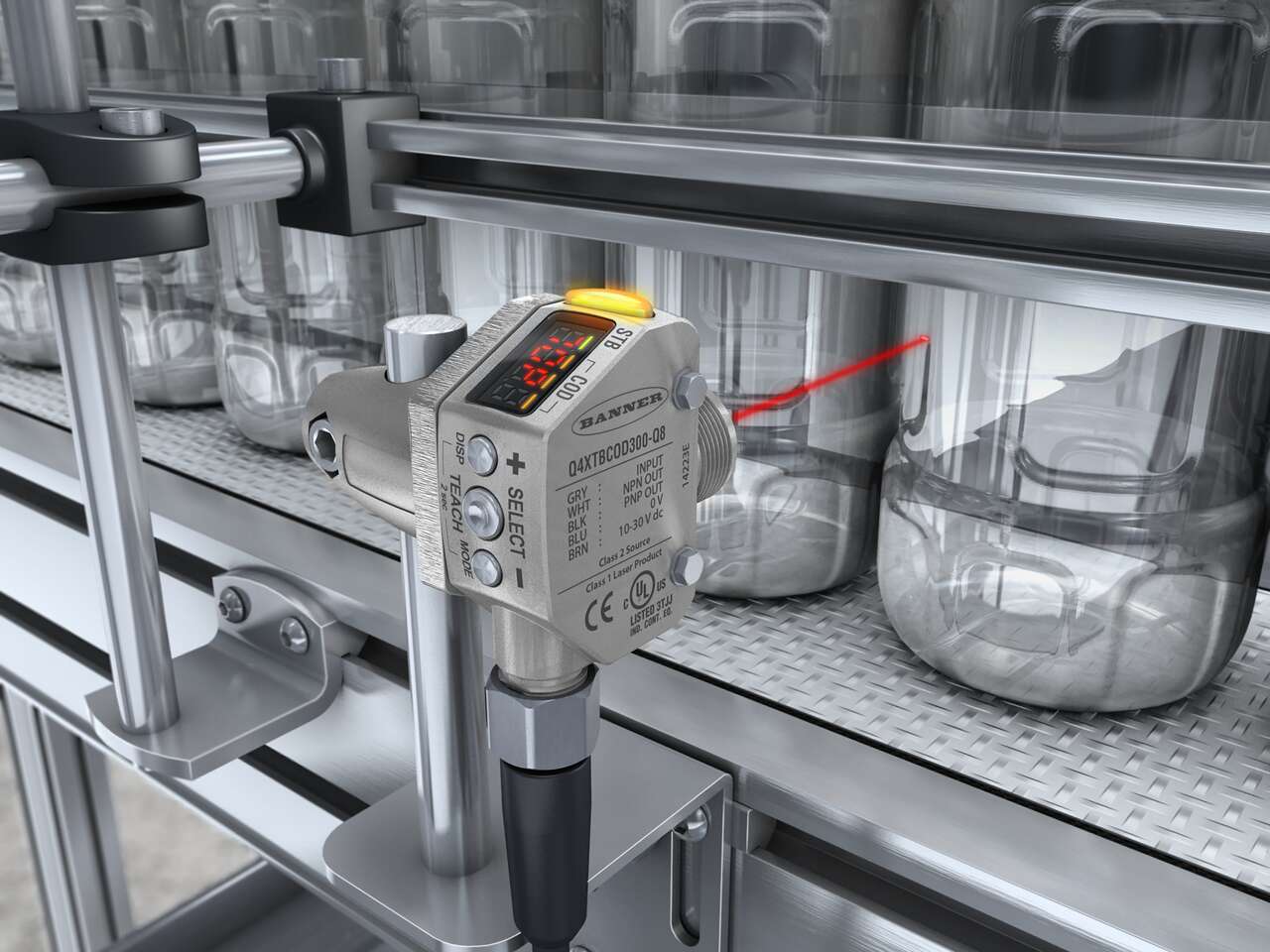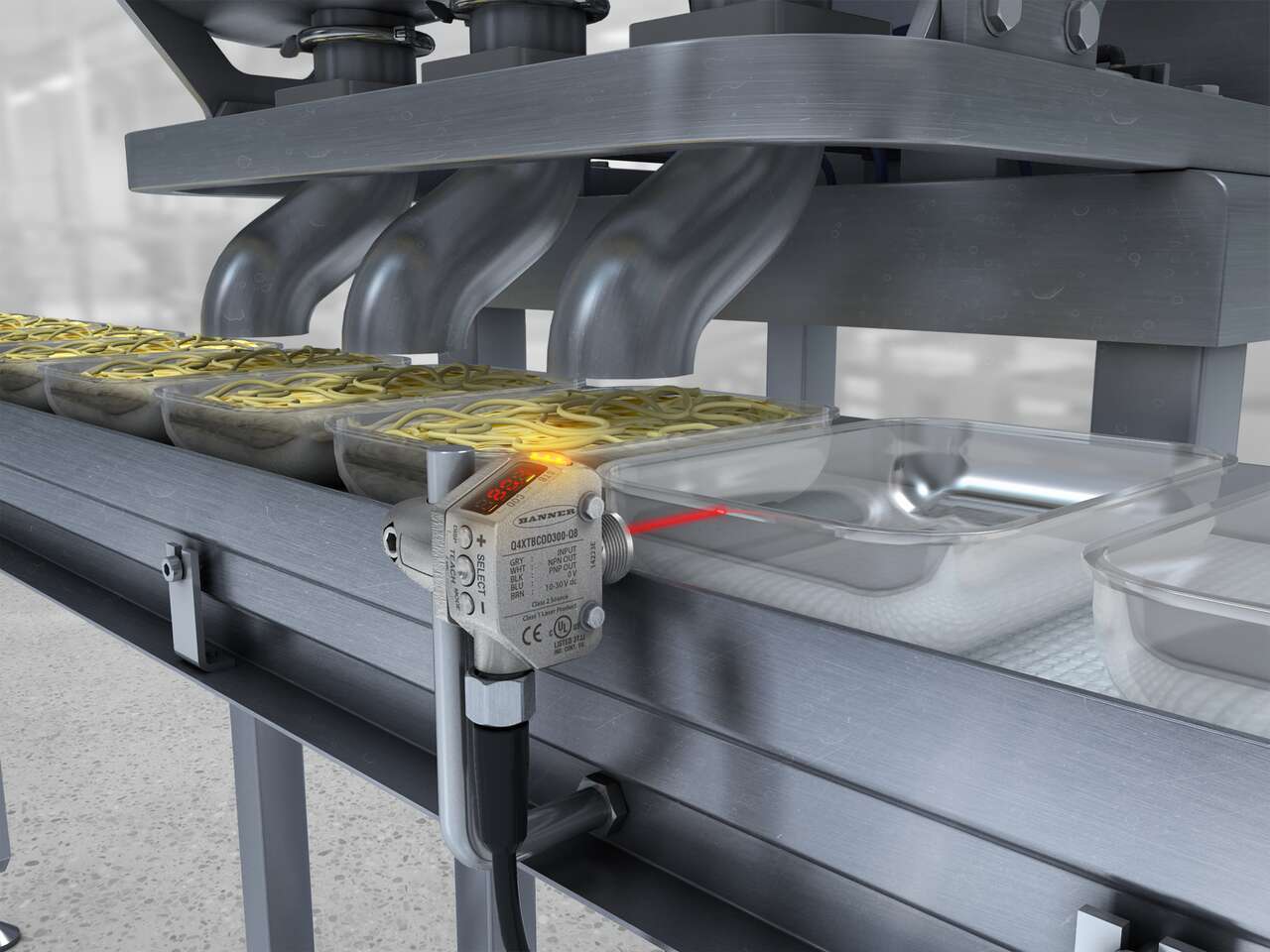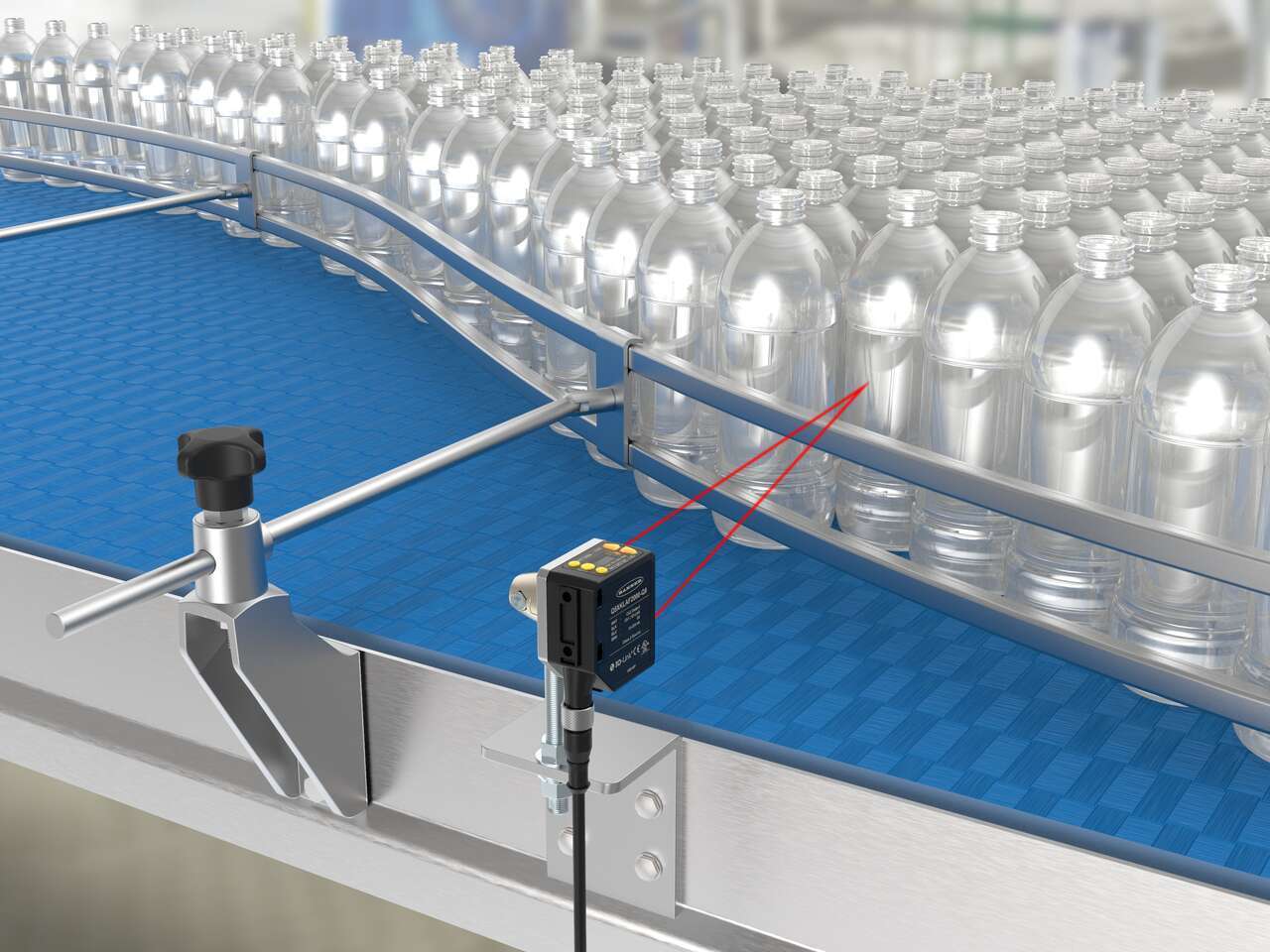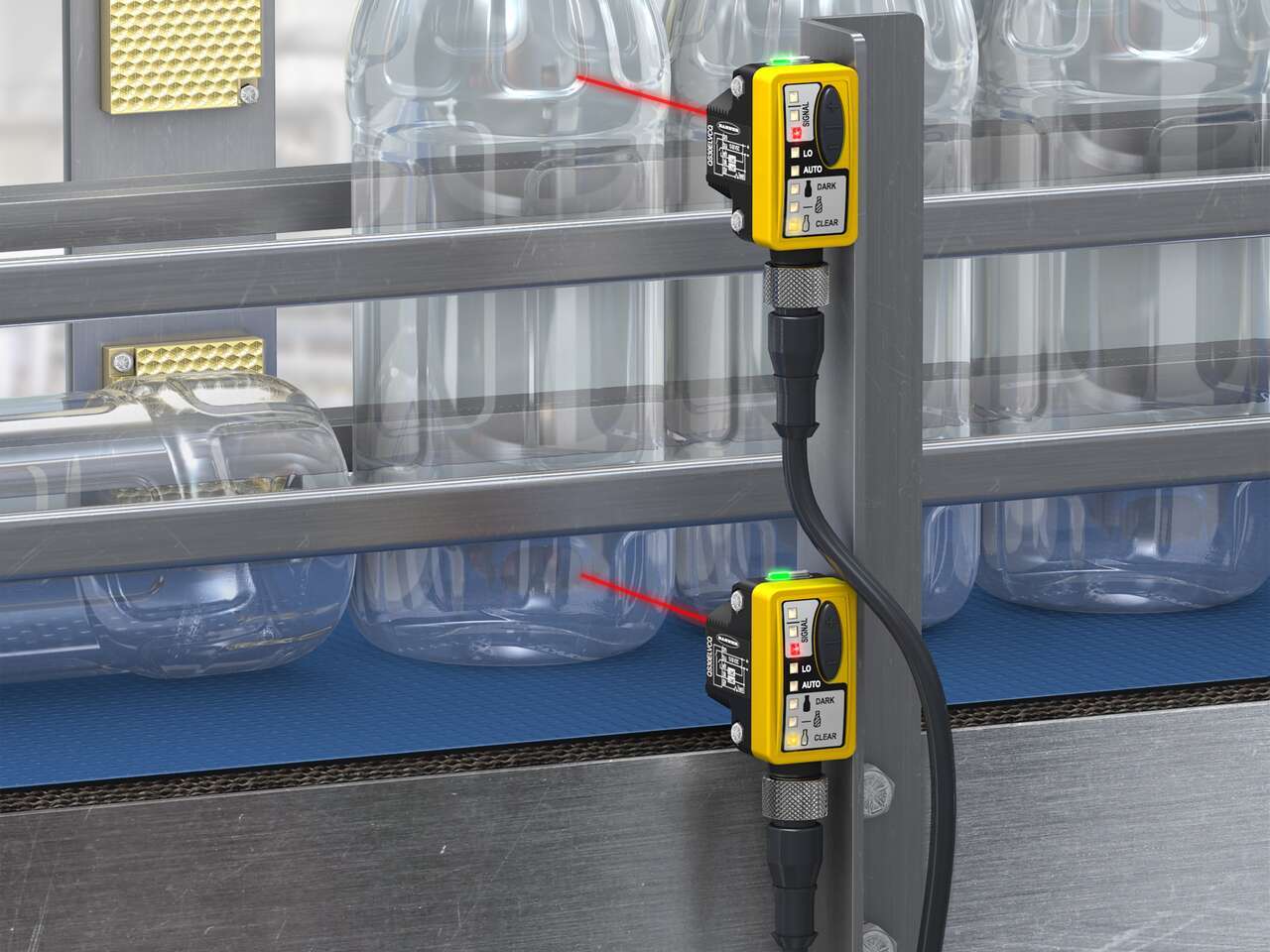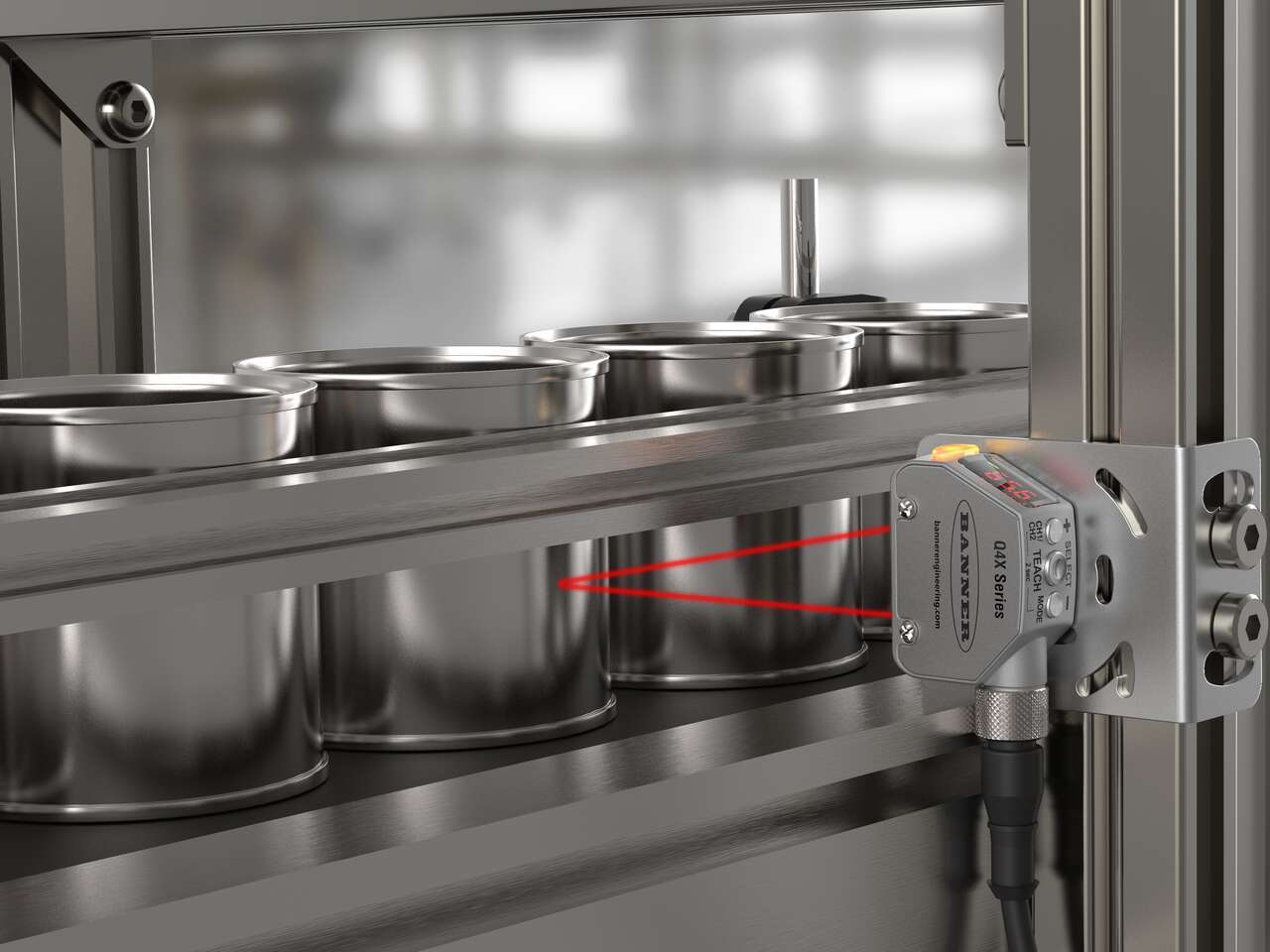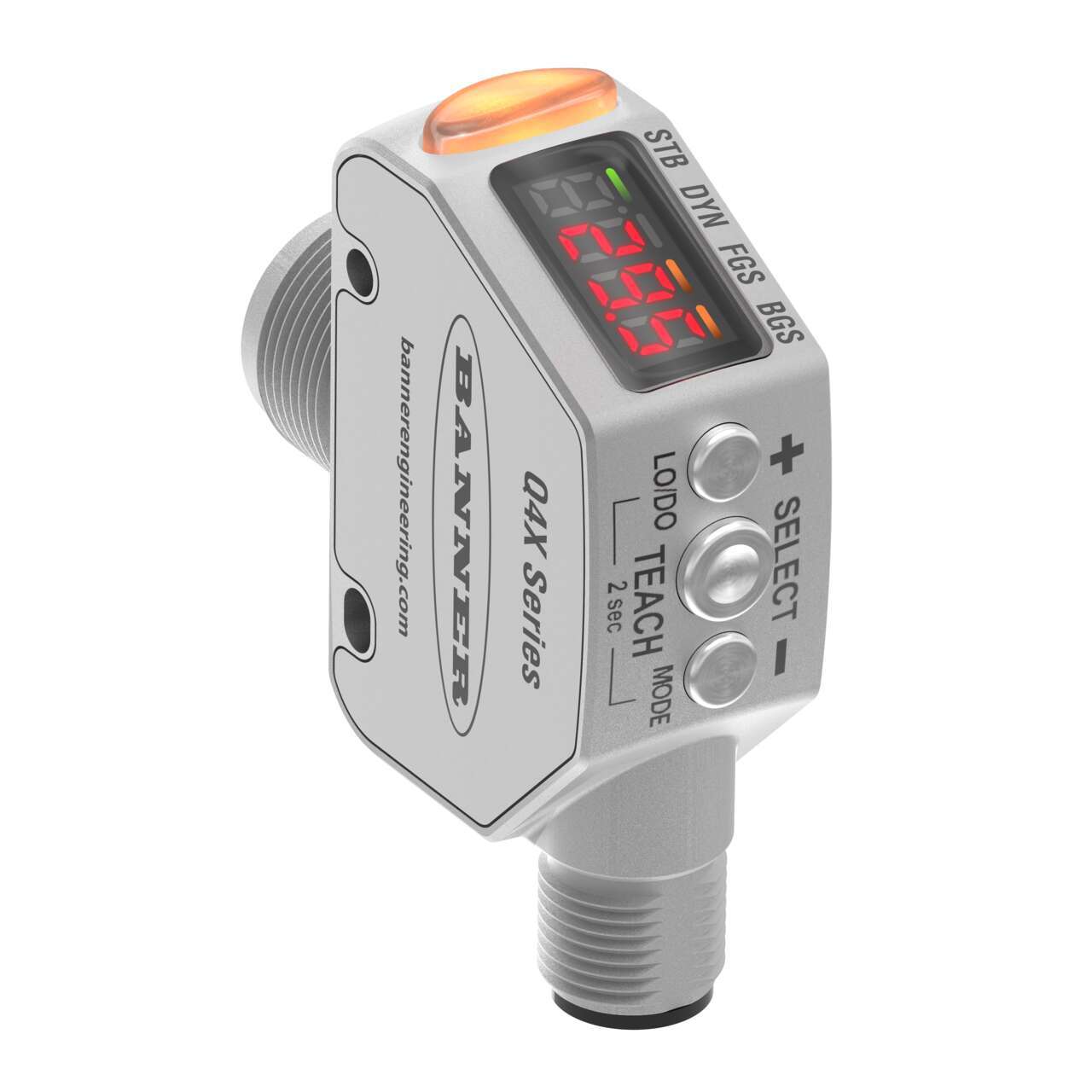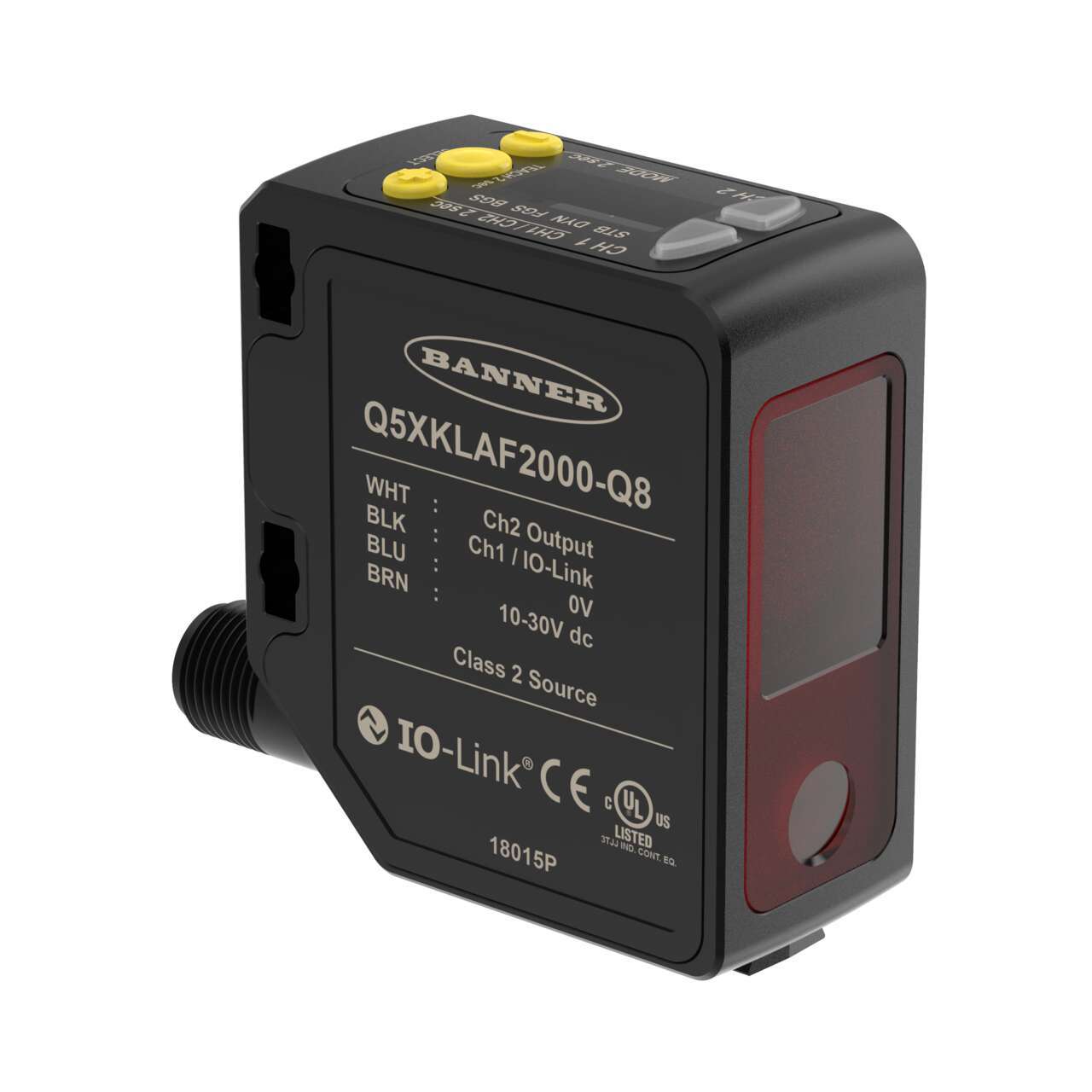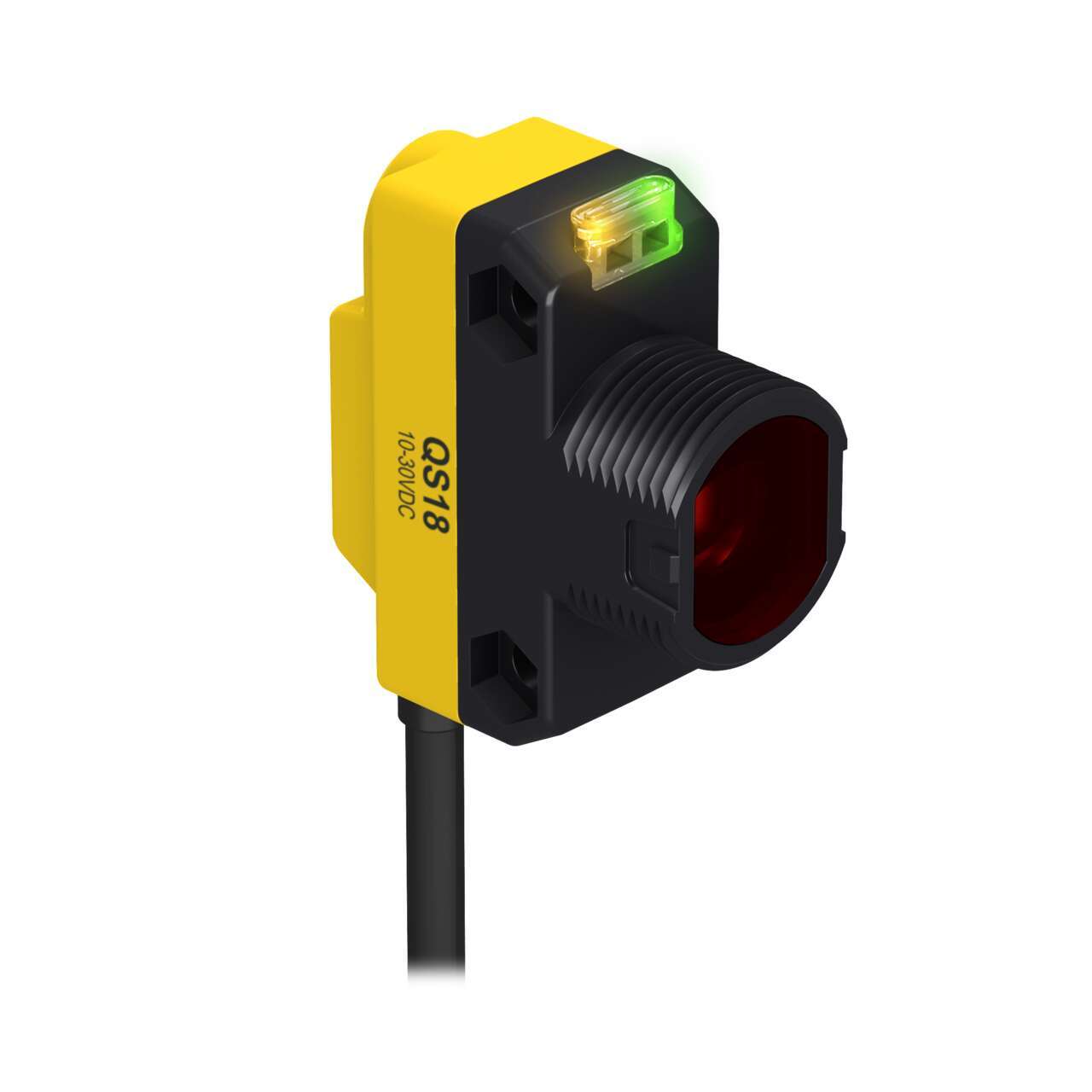Detecting Clear and Reflective Targets
Detecting transparent or shiny objects is one of the most challenging sensor applications. Variations in target shape, size, material, color, and translucence can complicate accurate detection. For example, the light from the sensor can burn through a target or be reflected away erratically.
Furthermore, not all clear and reflective materials attenuate light in the same way; for example, a glass bottle will attenuate light differently than a plastic bottle, and variations in the contours and grooves of a target can also cause light to reflect in unpredictable ways.
In addition, high speed conveyors and harsh washdown environments found in many clear object detection applications present additional challenges.
Two common technologies for clear object detection are: laser distance sensors and retro-reflective photoelectric sensors (photo-eyes).
Laser distance sensors are an extremely effective solution for clear object detection, including detecting small targets. Laser measurement sensors with dual mode can detect changes in both distance and light intensity to reliably identify clear objects; these sensors do not require a reflector or receiver unit, which allows for flexible mounting as well as reduced inventory and maintenance costs. In addition, laser sensors are available with response speeds as fast as 0.5 ms for detecting fast-moving targets.
Depending on your application, you might also consider retro-reflective photoelectric sensors. A photoelectric sensor designed for clear object detection is often a cost-effective solution for detecting larger clear objects with larger gaps between them, where the precision of a laser sensor is not necessary. Similar to laser sensors, photoelectric sensors are capable of very fast response times for high speed applications. It is important to consider, however, that these sensors do require mounting a reflector.
Choose Laser Distance Sensors With Dual Mode
A premier solution for clear and reflective object detection is a laser measurement sensor with dual mode. The small, visible laser spot allows for easier sensor alignment, greater precision, detection of smaller objects, and detection of smaller gaps between objects compared to an LED-based sensor. In addition, laser sensors with dual mode do not require a reflector for more flexible mounting and reduced inventory and maintenance costs.
In addition to measuring distance, laser sensors with dual mode also detect changes in light intensity from a stable background condition. In other words, a laser distance sensor with dual mode can detect not only when the target is present within a certain distance but also when it returns a certain amount of light to the receiver.
For this to work, a stable reference surface must be taught, and the distance and intensity of the reference surface are recorded and used as a baseline. The presence of a transparent or highly reflective object entering the sensing range of the beam alters the perceived distance and light intensity from the background condition.
Choose Photoelectric Sensors with Polarized Coaxial Optics
Retro-reflective sensors are the most commonly used LED-based photoelectric sensor in clear object detection applications. Each sensor houses an emitter and a receiver. The emitter directs a beam of light to a reflector which redirects the light beam back to the receiver. An object passing between the sensor and reflector will either block or attenuate a perceivable percentage of the emitted light.
Retro-reflective photoelectric sensors with a coaxial optical design emit and receive light along a single narrow axis. This optimizes clear object detection by dramatically reducing the risk of false detection from reflected light. Sensors using this technology have a small bright spot that simplifies sensor alignment and enables precise leading edge detection.
Photoelectric sensors with polarizing filters will emit and detect light waves of a specific polarization, ignoring all other light waves. This further reduces the risk of false detection caused by reflected light. Learn more about polarized coaxial optics for detecting transparent objects.
Choose Sensors Rated IP69K
Many clear object detection applications occur in food and beverage processing applications, which are often subjected to frequent high pressure, high temperature washdown and/or chemical clean-in-place processes to ensure a safe food chain.
Sensors rated IP69K are ideal for these environments, as they have been tested to ensure reliable operation even when subjected to frequent cleaning. A rugged, stainless steel sensor is a popular choice, and in some applications, a sensor made with food-grade materials may be required. Learn more about IP ratings and what they mean.
In some cases, plastic sensors can also be used, as long as they are properly sealed. In addition, some photoelectric sensors can see through an aperature, which allows them to be shielded for use in washdown and hygienic environments.
IP69K Laser Distance Sensor, 25-610 mm Range
Versatile, rugged laser distance sensors offering superior performance and capable of detecting sub-millimeter changes in distance.
- Discrete, analog (0 to 10 V or 4 to 20 mA), clear object, and IO-Link models available
- Reliable sensing range from as close as 25 mm and as far as 610 mm
- Detects across a variety of target colors, materials and surfaces based on distance
- Dual teach mode (intensity + distance) is ideal for error-proofing applications and enables clear object detection with no retro-reflector required
- Robust housing rated to IP69K with FDA-grade stainless steel
Laser Distance Sensor, 9.5 cm - 2 m Range
The Q5X background suppression laser is a powerful, problem-solving sensor in a cost-effective device with industry-standard rectangular housing.
- Range from 9.5 cm (4 inches) to 2 m (6 ft. 6 inches)
- Exceptionally high excess gain enables the sensor to reliably detect the darkest objects (<6% reflective black targets)
- Reliably detects black targets against a black background, black targets against a shiny metal background, clear and reflective objects, multicolor packaging, and targets of all colors
- Dual teach mode measures both distance plus light intensity to solve the most challenging applications
Photoelectric Sensor for Clear Object Detection
Universal housing design with 18 mm threaded lens an ideal replacement for hundreds of other sensor styles. Clear object detection models utilize a "Clear Tracking" algorithm which automatically compensates for the effects of dust buildup and ambient temperature changes, enhancing sensor reliability and longevity.
- Features a universal housing with an 18 mm threaded lens or side mounts
- Replaces hundreds of other sensors
- Meets IP67 and NEMA 6 standards for harsh environments
- Ranges up to 20 m
- Features bright LED operating status indicators
- COD models designed specifically for clear object detection.
